Description
Instruction for medical use
of ENAP® medicine
Trade name
of Enap®
International unlicensed
name Enalapril Dosage Form
of the Tablet of 2.5 mg
Ingredients:
One tablet contains
active agent – enalapril a maleate of 2.50 mg
excipients: Natrii hydrocarbonas, lactoses monohydrate, starch corn, hydroxypropyl cellulose, talc, magnesium stearate
the Description
of the Tablet of white color of round shape, with a biconvex surface, with slanted edges
Pharmacotherapeutic group
the Enzyme Angiotensin-converting (EAC) inhibitors. Enalapril
the ATX C09AA02 Code
the Pharmacological
Pharmacokinetics Enalapril properties is quickly absorbed from digestive tract, the maximum concentration of enalapril in blood serum is observed within 1 hour after reception. Extent of absorption makes 60% and does not depend on meal. After absorption, enalapril quickly is exposed to hydrolysis with formation of active agent of enalaprilat, powerful inhibitor of angiotenzinkonvertiruyushchy enzyme (AKF). The maximum concentration of enalaprilat in blood serum is observed in 4 hours after intake of enalapril. The period of effective semi-removal of enalaprilat at course use of drug inside is 11 hours. At persons with normal function of kidneys the equilibrium concentration of enalaprilat is reached by 4th day since the beginning of intake of enalapril.
In the range of therapeutic doses linking with proteins of blood plasma –
60%. It is removed, mainly, through kidneys. The main metabolites defined in urine are the enalaprilat making about 40% of a dose, and not changed enalapril (about 20%).
In a renal failure
of Influence of enalapril and enalaprilat increase at patients with a renal failure. At patients with a slight or moderate renal failure (clearance of creatinine from 0.6 to 1 ml/sec.), the equilibrium condition of AUC (the area under a curve ‘concentration time’) is approximately twice higher than enalaprilat, than patients with normal function of kidneys after reception have dosages of 5 mg once a day. In heavy renal failures (clearance of creatinine ≤ 0.5 ml/sec.), AUC increases approximately by 8 times.
Effective elimination half-life of enalaprilat lasts at this level a renal failure.
Enalapril can be removed from system circulation by means of a hemodialysis. The clearance of enalaprilat dialysis is 1.03 ml/sec.
The pharmacodynamics
of Enap® represents salt of maleic acid and enalapril, derivative two amino acids, L-alanine and L-proline. Angiotenzinkonvertiruyushchy enzyme (AKF) is peptidit dipeptidase which catalyzes conversion of angiotensin I in a vasoconstrictive form of angiotensin II. After absorption, enalapril is hydrolyzed with formation of enalaprilat which inhibits AKF. The inhibition of AKF leads to decrease in plasma level of angiotensin II which leads to increase in activity of renin in blood plasma (because of loss of a negative feedback mechanism of release of renin), and to decrease in secretion of Aldosteronum. AKF is identical to a kinase of II. Thus, enalapril can also block bradykinin destruction – the peptide possessing vazodilatiruyushchy action.
In spite of the fact that Enap® reduces arterial blood pressure by means of suppression renin-angiotensin-aldosteronovoy of a system which plays an important role in regulation of arterial blood pressure, drug reduces arterial blood pressure even at patients with lowrenine arterial hypertension. Purpose of Enapa® to patients with arterial hypertension leads to a lowering of arterial pressure both in a standing position, and in horizontal position, without significant increase in heart rate.
Achievement of an optimum lowering of arterial pressure can demand several weeks of therapy from some patients. Sudden cancellation of therapy of Enapom® does not lead to sharp increase in arterial blood pressure.
The effective inhibition of activity of AKF usually develops in 2-4 hours after single dose of enalapril inside. The beginning of hypotensive action usually occurs within 1 hour, the maximum effect of a lowering of arterial pressure is observed in 4-6 hours after administration of drug. Duration of action depends on a dose, but when using of the recommended doses, hypotensive action and hemodynamic effects remain within 24 hours.
At patients with primary arterial hypertension, the lowering of arterial pressure is followed by decrease in peripheric arterial resistance with increase in warm emission and, practically, without changes of heart rate. After administration of enalapril the renal blood stream increases, but glomerular filtration rate remains invariable. Signs of a delay of sodium and water are not observed. However, if before treatment at patients the low size of glomerular filtration was observed, then it, as a rule, increases. After intake of enalapril at the patients with diabetes and also who do not have diabetes with diseases of kidneys, decrease in an albuminuria and excretion with IgG urine (immunoglobulin) and crude protein of urine is observed.
At a combination with thiazide diuretics, the effect of enalapril on a lowering of arterial pressure becomes more expressed. Enalapril can reduce or prevent development of the hypopotassemia caused by diuretics. At patients with heart failure, receiving treatment with drugs of a digitalis and diuretics, treatment by enalapril reduces the peripheric resistance and arterial blood pressure. Warm emission increases while the heart rate (as a rule, is higher at patients with heart failure) decreases. Pulmonary capillary pressure decreases. According to the recommendations of the New York cardiological association, treatment by enalapril increases resistance to physical activity, reduces signs and severity of heart failure, These effects proceed throughout long therapy of Enapom®. At patients with slight or moderate heart failure, Enap® slows down the progressing warm dilatation / expansion and insufficiency (decrease in fraction of emission of a left ventricle, final diastolic and systolic volumes and improvement of fraction of emission). At patients with dysfunction of a left ventricle, Enap® reduces risk of the main ischemic events, incidence of a myocardial infarction and number of hospitalization because of unstable stenocardia.
Энап® renders also favorable effect on cerebral circulation at patients with hypertensia and a chronic disease of brain vessels.
– essential arterial hypertension
– symptomatic hypertensia in diseases of kidneys (also in
a renal failure and disturbance of the renal function caused
by diabetes)
– chronic heart failure
– prevention of ischemia of a myocardium and symptomatic cordial nedostatoch-
to Nosta at patients with asymptomatic dysfunction of a left ventricle (fraction
of emission ≤ 35%)
the Route of administration and doses
of GipertenziyaNachalnaya the dose makes indications from 5 mg to 20 mg, depending on degree of hypertensia and a condition of the patient. Энап® it is necessary to accept once in day. In slight hypertensia, the recommended initial dose makes from 5 mg to 10 mg a day. At patients renin-angiotensin-aldosteronovoy by a system (for example, renovascular hypertensia, deficiency of salt and liquid, heart failure or a severe form of hypertensia) can happen an excessive lowering of arterial pressure in an initiation of treatment to strongly activated. The initial dose of 5 mg or less is recommended to such patients, and the initiation of treatment needs to be carried out under careful observation of the doctor. Preliminary treatment by high doses of diuretics can result in deficiency of liquid and risk of appearance of hypotension, at the beginning of therapy by enalapril. The initial dose of 5 mg or less is recommended to such patients. Whenever possible, therapy by diuretics should be stopped in 2-3 days prior to therapy by enalapril. During treatment it is necessary to control function of kidneys and level of potassium in blood plasma. The usual maintenance dose makes 20 mg once a day. The maximum dose makes 40 mg a day.
Heart failure / asymptomatic dysfunction left a zheludochkanachalny dose of Enap® at patients with symptomatic heart failure or asymptomatic dysfunction of a left ventricle makes 2.5 mg once in day. Primary effect of drug on arterial blood pressure should be controlled carefully.
At treatment of heart failure of enalapril the maleate, is usually used in a combination with diuretics and beta-blockers and, if necessary, with cardiac glycosides.
In case of lack of effect, or after the corresponding correction of symptomatic hypotension, to patients with heart failure after the beginning of therapy, a dose it is necessary to increase gradually to a usual maintenance dose 20 mg which is appointed or once, or is divided into two receptions (depending on tolerance of drug the patient).
Such dose adjustment is recommended to be carried out within 2-4 weeks. The maximum dose makes 40 mg a day, appointed in two steps.
The recommended correction of dosages at patients with symptomatic heart failure or asymptomatic dysfunction of a left ventricle
of Week
the Dose in mg a day
Week 1
from 1 to 3 day: 2.5 mg a day in a single dose
from 4 to 7 day: 5 mg a day in two steps
Week of 2
10 mg in a single dose, or in two steps
Week of 3
20 mg in a single dose, or in two steps
osoby precautionary measures it is necessary to observe at patients with impaired renal function and those who accept diuretics.
Both to, and after an initiation of treatment of Enapom® it is necessary to carry out careful control of arterial blood pressure and functions of kidneys as there were messages about development of hypotension and is (much more rare) than a renal failure as a result of administration of drug. At the patients receiving treatment by diuretics, the dose of drug should be reduced, whenever possible, prior to treatment by enalapril. Development of hypotension after an initial dose of enalapril does not mean that hypotension will remain at long-term treatment by enalapril, and does not indicate the need of the termination of administration of drug. During treatment it is also necessary to control potassium content in blood plasma.
A dosage in a renal failure
the patients with a renal failure, have to have an interval between intake of enalapril the dosage is increased and/or is reduced.
The clearance of creatinine
the Initial dose in mg a day
Clearance of creatinine between 0.5 and 1.33 ml / with
from 5 mg to 10 mg
Clearance of creatinine between 0:16 and 0.5 ml / from
2.5 mg
Clearance of creatinine of 0.16 ml / with or
is less than 2.5 mg in day of carrying out dialysis *
• Enalapril is exposed to dialysis, correction of a dosage in days when dialysis is not carried out, has to be carried out depending on the level of arterial blood pressure.
Elderly patients
appoint the Dose according to function of kidneys at elderly patients.
The dose of drug is always adjusted depending on a condition of the patient.
Side effects
Very often (≥1/10)
– the obscured sight
– dizziness
– cough
– nausea
– an asthenia
Often (from ≥1/100 to & lt, 1/10):
– a headache, a depression
– hypotension (including orthostatic hypotension), a faint, stethalgias,
disturbances of a rhythm, stenocardia, tachycardia
– short wind
– diarrhea, an abdominal pain, change of taste
– rash, hypersensitivity / a Quincke’s disease of the face, extremities,
lips, language, a glottis and/or throat
– fatigue
– a hyperpotassemia, increase in creatinine in blood plasma
Infrequently (from ≥1/1.000 to & lt, 1/100)
– anemia (including. aplastic and hemolytic)
– a hypoglycemia
– confusion of consciousness, drowsiness, insomnia, nervousness, paresthesias,
dizziness
– heartbeat, a myocardial infarction or cerebral and vascular oslozhne-
the niya *, at patients with the increased risk
is a rhinorrhea, a sore throat, hoarseness, bronchospasm/asthma
– intestinal impassability, pancreatitis, vomiting, dyspepsia, a constipation, anorexia,
irritation of a stomach, dryness in a mouth, a round ulcer
– sweating, an itching, urticaria, an alopecia
– a renal failure, a renal failure, a proteinuria
– impotence
– spasms, rushes of blood, sonitus, a general malaise,
fever
– increase in urea in plasma, a hyponatremia
Seldom (from ≥1/10.000 to & lt, 1/1.000)
– a neutropenia, a hypohaemoglobinaemia, decrease in gematokritny number,
thrombocytopenia, an agranulocytosis, oppression of function of marrow,
a pancytopenia, a lymphadenopathy, autoimmune diseases
– insomnia, a sleep disorder
– Reynaud’s phenomenon
– infiltrates in lungs, rhinitis, an allergic alveolitis / eosinophilic
pneumonia
– stomatitis / aphthous ulcers, a glossitis
– a liver failure, hepatitis, including hepatocellular
or cholestatic hepatitis, including necrosis, a cholestasia, jaundice
– a multiformny erythema, Stephens-Johnson’s syndrome, exfoliative
dermatitis, a toxic epidermal necrolysis, a bladderwort, an erythrosis
– an oliguria
– a gynecomastia
– increase in enzymes of a liver, increase in bilirubin in blood plasma
is Very rare (& lt, 1/10.000)
– intestinal angio-swelled
It is unknown (it cannot be estimated on the basis of the available data)
– the syndrome of inadequate secretion of antidiuretic hormone (SNADG)
* Coefficient of incidence was comparable to that in placebo and active control groups of placebo in clinical trials.
The complex of symptoms was noted: fever, serositis, vasculitis, myalgia/miositis, arthralgia/arthritis, positive test for antinuclear antibodies (ANA), acceleration SOE, eosinophilia and leukocytosis. Also there can be rash, a photosensitization and other dermatological manifestations.
At emergence of serious side effects, treatment should be stopped.
Contraindications
– hypersensitivity to enalapril, other components
of drug or other AKF inhibitors
– the Quincke’s disease in the anamnesis connected with the previous
use of AKF inhibitors
– a hereditary or idiopathic Quincke’s disease
– pregnancy, the lactation period
– children’s and teenage age up to 18 years
Medicinal interactions
Kaliysberegayushchy diuretics, nutritional supplements of potassium
AKF Inhibitors reduce the potassium loss caused by diuretics. Use of kaliysberegayushchy diuretics (Spironolactonum, Triamterenum or amiloride), other drugs increasing potassium level in blood serum (for example, heparin), potassium additives or kaliysoderzhashchy substitutes of salt can lead to a hyperpotassemia. Such simultaneous use, therefore, is not recommended.
In need of simultaneous use because of a hypopotassemia, they need to be used with care, and with frequent control of level of potassium in blood plasma.
Preliminary treatment by high doses of diuretics can result diuretics (thiazide or loopback diuretics) in deficiency of liquid and risk of appearance of hypotension, at the beginning of therapy by enalapril. The hypotensive effect can be reduced because of the termination of intake of diuretics, increase in consumption of salt and liquid, or began therapies with a low dose of enalapril.
Other antihypertensive drugs
Simultaneous use of these drugs can increase hypotensive effect of enalapril. The concomitant use with nitroglycerine, other nitrates or other vazodilatator can lead to a bigger lowering of arterial pressure.
LitiyPri combined use of lithium and AKF inhibitors was told about reversible increase in concentration of lithium in blood plasma and toxicity. Simultaneous use with thiazide diuretics can lead to a bigger increase in level of lithium and to risk of toxicity of lithium. Simultaneous use of these drugs is not recommended, but if necessary, it is necessary to carry out careful monitoring of level of lithium in plasma.
Simultaneous use of certain anesthetics, tricyclic antidepressants and neuroleptics with AKF inhibitors can lead tricyclic antidepressants and/or antipsychotic drugs and/or anesthetics and/or drugs to an additional lowering of arterial pressure.
Non-steroidal anti-inflammatory drugs (NPVP)
Long reception of NPVP can reduce antihypertensive effect of AKF inhibitors. NPVP (including TsOG-2 inhibitors) and AKF inhibitors render additive effect on increase in level of potassium in blood plasma that can lead to deterioration in function of kidneys. This effect, as a rule, is reversible. In rare instances, there can be an acute renal failure, especially at patients with impaired renal function (the patients of advanced age or patients with a hypovolemia of a severe form including accepting diuretics). Patients it is necessary to hydrate and control respectively renal function after the beginning and periodically during the accompanying therapy.
Gold drugs
At simultaneous therapy by AKF inhibitors, including enalapril, and injections of drugs of gold (aurotiomalat sodium) it was in rare instances reported about nitritoidny reactions (face reddening, nausea, vomiting and arterial hypotension).
Antidiabetic drugs
Epidemiological researches showed that simultaneous use of AKF inhibitors and antidiabetic drugs (insulin, oral hypoglycemic means), can cause the increased antihyperglycemic effect with risk of development of a hypoglycemia. This phenomenon is more often observed within the first weeks of the combined treatment and at patients with a renal failure.
AlkogolAlkogol strengthens hypotensive effect of AKF inhibitors.
SimpatomimetikiSimpatomimetiki can reduce antihypertensive effect of AKF inhibitors.
Acetylsalicylic acid, trombolitik and ß blockers
Simultaneous use of enalapril with acetylsalicylic acid (in cardiological doses), trombolitika and beta blockers safely.
Special instructions
Symptomatic hypotension
Symptomatic hypotension seldom meets at treatment of uncomplicated arterial hypertension, but can develop at patients with deficiency of liquid (diuretic therapy, a diet with salt restriction, a hemodialysis, a diarrhea or vomiting. Symptomatic hypotension can arise at patients with heart failure with the associated renal failure or without it. It can also appear at patients with heavier degree of heart failure who accept loopback diuretics in high doses, with a hyponatremia or a renal failure. At these patients to begin treatment and to change a dose of enalapril and/or diuretic it is necessary under careful medical control. Similar security measures should be carried out at treatment of patients with stenocardia or a cerebrovascular disease when the excessive lowering of arterial pressure can lead to a myocardial infarction or a stroke.
At appearance of arterial hypotension of the patient it is necessary to turn to horizontal position and, if necessary, to carry out correction of volume of plasma by intravenous administration of 0.9% of solution of sodium of chloride. Tranzitorny arterial hypotension is not a contraindication for further use of enalapril. Usually after normalization of the ABP thanks to introduction of additional volume, further doses of drug by patients are well transferred.
At some patients with heart failure with normal or low arterial blood pressure, the additional lowering of arterial pressure can occur at enalapril use. Such effect is expected and, as a rule, is not the basis for the treatment termination. If hypotension becomes symptomatic, the dose decline and/or phase-out of diuretics and/or enalapril are obligatory.
Stenosis of the aortal and mitral valve, hypertrophic kardiomiopatiyakak and all vazodilatator, AKF inhibitors it is necessary to apply with care at treatment of patients with obstruction of a portable path of a left ventricle and to avoid cases of cardiogenic shock and hemodynamically significant obstruction of a portable path of a left ventricle.
A renal failure
At patients with impaired renal function (clearance of creatinine & lt, 1.33 ml / c), an initial dose it is necessary to select depending on clearance of creatinine, then depending on treatment response.
Creatinine level in plasma and the level of potassium needs to be controlled regularly. Patients with heavy heart failure or diseases of kidneys of the latent form, including a renal artery stenosis, during treatment by enalapril can have a renal failure. At operational and corresponding treatment, it is usually reversible.
Some patients with the invisible, but already existing diseases of kidneys, after intake of enalapril along with diuretics, had insignificant and passing increases in levels of urea in blood plasma and creatinine. Therefore there can be a need for a dose decline of AKF inhibitor and/or cancellation of diuretics. This situation provokes appearance of a renal artery stenosis of the latent form.
Renovascular hypertensia
Exists the increased risk of developing arterial hypotension and renal failure when patients with a bilateral stenosis of renal arteries or a stenosis of an artery of the only functioning kidney accept treatment by AKF inhibitors. Loss of function of kidneys can happen only at moderate changes of level of creatinine in blood plasma. Such patients should begin treatment with low doses and under careful observation of the doctor, during treatment it is necessary to titrate doses with care and to control function of kidneys.
Transplantation of a kidney
due to the lack of experience, treatment by enalapril is not recommended to the patients who recently transferred transplantation of kidneys.
A liver failure
during therapy by AKF inhibitors development of a syndrome which begins with cholestatic jaundice is in rare instances possible and then progresses to fulminantny necrosis of a liver and (sometimes) with a lethal outcome. The mechanism of development of this syndrome is not clear. If during intake of AKF inhibitor there is jaundice or increase in levels of enzymes of a liver, the taken drug should be cancelled immediately, and the patient has to be under careful observation and if necessary receive adequate therapy.
The neutropenia and an agranulocytosis
At the patients accepting AKF inhibitors are noted cases of development of a neutropenia/agranulocytosis, thrombocytopenia and anemia. At patients with normal function of kidneys in the absence of other complications, the neutropenia develops seldom.
Enalapril needs to be applied with very big care at the patients with collagenoses (for example, a system lupus erythematosus, a scleroderma) who are at the same time receiving therapy by immunodepressants, Allopyrinolum or procaineamide and also with a combination of these factors, especially at the existing renal failures. At such patients the heavy infections which are not giving in to intensive antibiotic treatment can develop. When prescribing drug it is recommended to control periodically quantity of leukocytes in blood. The patient has to be warned that in case of any symptoms of an infection it is necessary to see a doctor immediately.
Hypersensitivity and a Quincke’s disease
Among the patients accepting AKF inhibitors, including enalapril, about development of Quincke’s diseases of the face, extremities, lips, language, a glottis and/or throat, it was reported in rare instances. It can arise throughout treatment at any time. In that case, treatment it is necessary to stop and take the appropriate measures for ensuring total disappearance of symptoms at the patient. Even when only the paraglossa without breath disturbance develops, long observation of a condition of the patient after treatment by antihistaminic drugs and corticosteroids which can be insufficiently for efficiency of treatment can be required. Seldom or never in paraglossas and a throat noted death. Patients with hypostases of language, a glottis or throat will probably experience obstruction of airways, especially those patients who underwent an operation on airways. If hypostasis of language, a glottis or throat threatens with development of obstruction of airways, it is necessary to carry out emergency treatment as soon as possible – hypodermic administration of solution of adrenaline 1:1000 (0.3-0.5 ml) and to take measures for ensuring passability of airways.
At the black patients receiving AKF inhibitors as it was reported, the Quincke’s edema developed more more often in comparison with not black.
The patients who earlier had the Quincke’s edema which is not connected with therapy by AKF inhibitors have the increased risk of a Quincke’s disease during intake of AKF inhibitors.
Anaphylactoid reactions at hymenopterous desensitization
At the patients receiving AKF inhibitors during a desensitization course bee or aspen poison are in rare instances possible life-threatening anaphylactoid reactions. Development of these reactions can be avoided by temporary cancellation of AKF inhibitor before each procedure of desensitization.
Anaphylactoid reactions when carrying out an aferez LDL
At the patients receiving AKF inhibitors in time during an aferez of lipoproteins of the low density (LDL) dextran sulfate are in rare instances possible life-threatening anaphylactoid reactions. Development of these reactions can be avoided by temporary cancellation of AKF inhibitor before each procedure of an aferez.
The patients who are on a hemodialysis
About development of hypersensitivity, anaphylactoid reaction it was reported among the patients who are on a hemodialysis with use of poliakrilnitrilovy membranes (AN 69) and at the same time accepting AKF inhibitors. In need of carrying out a hemodialysis it is necessary to use other type of membranes, or to transfer the patient to intake of suitable drug from other class of antihypertensive agents.
GipoglikemiyaU of the patients with diabetes receiving anti-diabetic oral drugs or insulin within the first month of treatment by AKF inhibitors needs to control carefully sugar level in blood.
KashelVo treatment time AKF inhibitors can arise steady, dry, unproductive cough which passes after the therapy termination. It is necessary to consider it as a part of differential diagnosis of cough.
Surgery and anesthesia
At the patients taking the hypotensive drugs after extensive surgeries during the general anesthesia, enalapril can block the formation of angiotensin II secondary to compensatory release of renin. If the doctor assumes this mechanism of arterial hypotension, treatment can be directed to increase in volume of the circulating blood.
By GiperkaliemiyaPovyshenie of potassium level in blood plasma it was observed at some patients receiving AKF inhibitors including enalapril. Risk factors for development of a hyperpotassemia include a renal failure, deterioration in function of kidneys, age (& gt, 70 years), diabetes, intermediate events, in particular, dehydration, an acute heart failure, a metabolic acidosis and simultaneous use of kaliysberegayushchy diuretics (Spironolactonum, an eplerenona, Triamterenum or amiloride), potassium additives and potassium – the containing salt substitutes and also intake of other drugs increasing potassium level in blood plasma (for example, heparin). Use of potassium additives or kaliysoderzhashchy substitutes of salt or kaliysberegayushchy diuretics can lead to significant increase in level of potassium in blood plasma, especially at patients with impaired renal function. The hyperpotassemia can cause emergence serious, sometimes fatal arrhythmia. If simultaneous use of enalapril with any of above-mentioned agents, is considered expedient, then they should be applied with care and more often to control potassium level in blood plasma.
LitiyKombinirovannyy use of lithium and enalapril is not recommended.
Ethnic distinctions
As well as other inhibitors angiotensin – the converting enzyme, enalapril is less effective in a lowering of arterial pressure at black people, than at the others, perhaps, because of higher prevalence of the status of low renin.
Энап® contains lactose. Patients with rare hereditary problems of intolerance of a galactose, deficiency of Lappa lactase or a sprue of glucose galactose should not take this drug.
Features of influence of medicine on ability to run the vehicle or potentially dangerous mechanisms
At control of motor transport or other mechanisms, it is necessary to consider the probability of developing of dizziness and exhaustion.
Overdose
Symptoms: the profound arterial hypotension beginning approximately in 6 h after administration of drug, the Symptoms connected with overdose include circulator shock, electrolytic disturbances, a renal failure, a hyperventilation, tachycardia, heart consciousness, bradycardia, dizziness, concern and cough.
Treatment: intravenous injection of normal saline solution. Whenever possible, it is also possible to consider treatment by infusion of angiotensin II and/or intravenous administration of catecholamines. It is necessary to take measures for prevention of absorption of drug (for example, induction of vomiting, gastric lavage, administration of absorbents and sodium of sulfate). Enalaprilat can be removed from system blood circulation by means of a hemodialysis (enalaprilat clearance rate – 62 ml/min.).
In bradycardia, resistant to treatment, the cardiostimulating therapy is shown. Key indicators of a condition of an organism, concentration of electrolytes and creatinine in blood plasma should be controlled constantly.
The form of release and packing
On 10 tablets place in blister strip packaging from a film three-layer (the focused polyamide/aluminium/polyvinylchloride) and aluminum foil.
On the 2nd blister strip packagings together with the instruction for medical use in the state and Russian languages place in a pack from cardboard.
To Store storage conditions in original packing at a temperature not over 25 ºС,
in the place protected from moisture.
To store out of children’s reach!
3 years
not to use a period of storage after term go
to Develop
Additional information
| Ingredient |
|---|





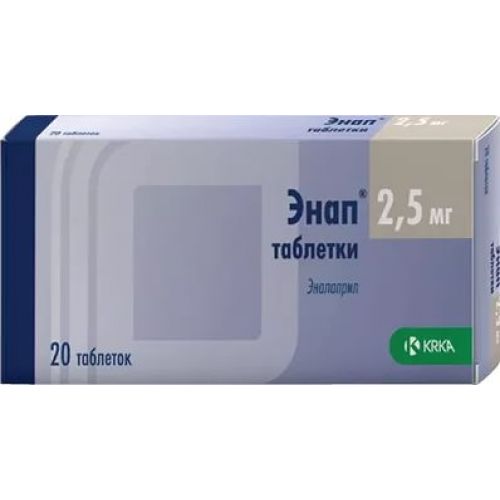
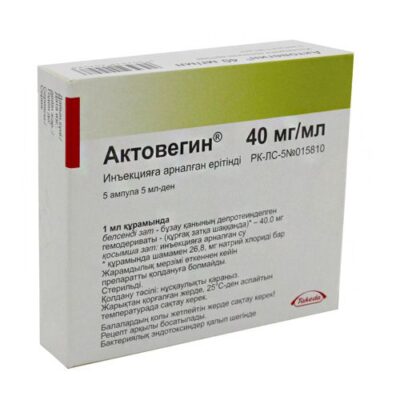
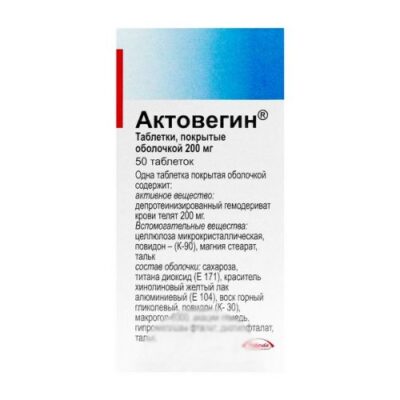
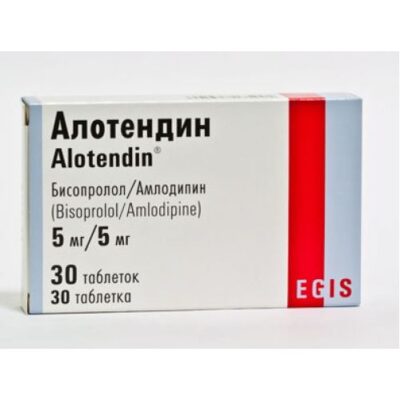
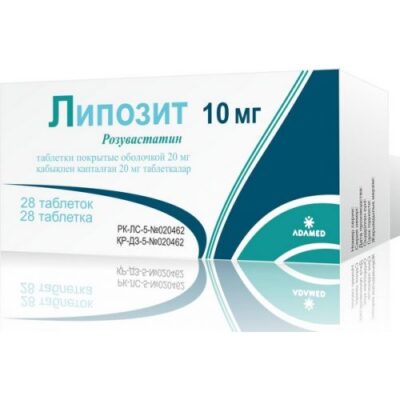
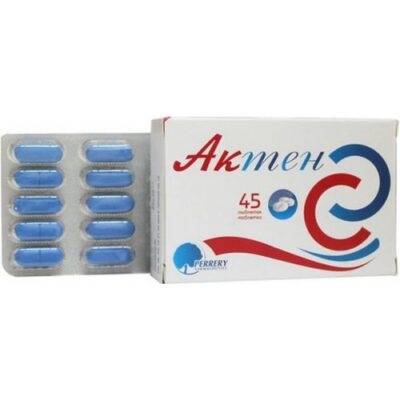
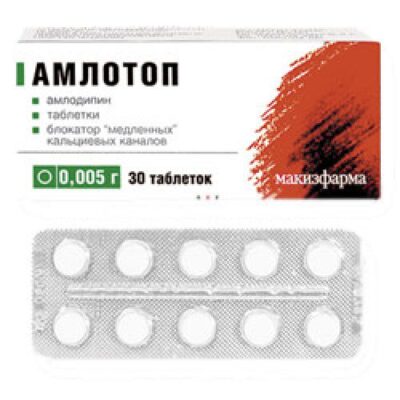
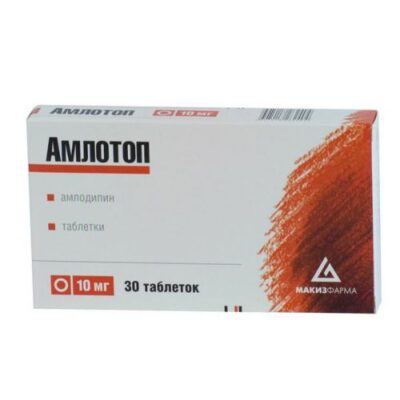
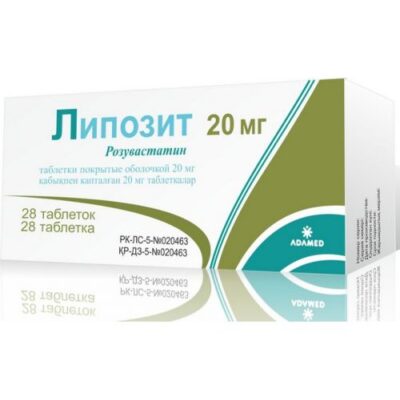
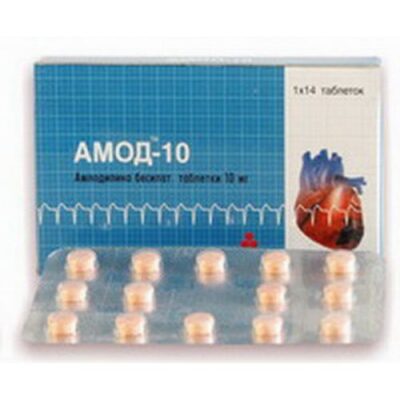
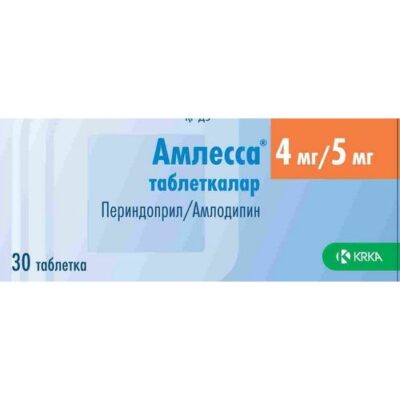






Reviews
There are no reviews yet.